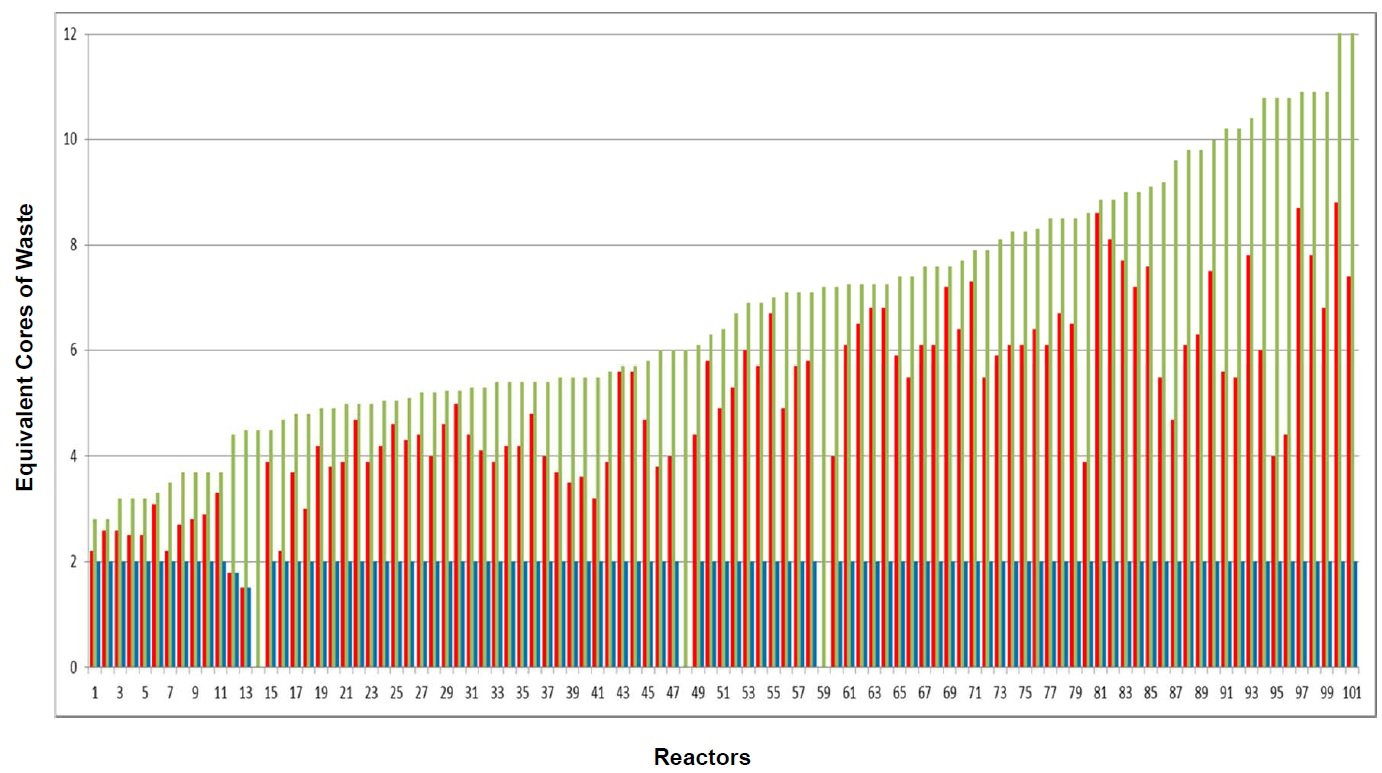Spent fuel pools pose a much bigger threat to public safety than they should because of the large amount of radioactive material they contain, which could be released to the environment in a severe accident.
While concerns tend to focus on the nuclear fuel contained in reactor cores, cooling pools in the U.S. typically contain much more fuel than the core. Currently, U.S. pools overall contain over 5 times more radioactive fuel than is in all the reactor cores, and some individual reactor pools contain more than 8 times as much fuel as the reactor core. Yet the pools don’t have the same level of protection or safety systems as the reactor cores.
Over-crowded Pools
Figure 1 shows how crowded these pools have become. Each of the green bars represents a reactor operating in the U.S. The height of the green bar shows the capacity of the cooling pool associated with that reactor, expressed as a multiple of the amount of fuel in one core. For each reactor, the height of the red bar shows the amount of spent fuel in that pool.

Fig. 1: Green is pool capacity. Red is amount of fuel in the pool (using 12/31/11 data; 3 missing points) (click to enlarge)
Not only does Figure 1 show that reactors typically have many cores worth of spent fuel in their pool, but it shows that the pools are filling up.
Figure 2 shows what would happen if reactors were only allowed to store up to 2 cores worth of fuel in the pool (blue bars) with the rest transferred to dry casks. This would essentially be the equivalent of moving any fuel to casks that had been in the pool for more than 10 years. It would remove nearly 60% of the fuel from the pools.

Fig. 2: Blue is the amount of fuel remaining if spent fuel that has been in the pool over about 10 years is removed. In this case some 300 cores of waste are removed and about 220 cores remain. (click to enlarge)
The situation with the blue bars in Fig. 2 poses much less risk to the public should an accident occur. So what’s stopping plants from doing this?
Why Not Transfer?
It’s partly cost, although these costs will need to be born in any event. It’s partly hassle—the industry doesn’t want to do it if it doesn’t have to. Some argue that transfers can cause undue radiation exposure for workers, but that argument doesn’t hold. Plant operators also have concerns that fuel stored in casks might eventually need to be repackaged before it can be moved to a repository, but that shouldn’t be a show-stopper.
The bottom line seems to be that—despite close calls like at Fukushima—the nuclear industry and NRC just don’t think that there is a real possibility of a serious accident or terrorist attack that would cause a big release of radiation and are therefore not motivated to change the situation.
That approach, however, leaves the public at a much higher risk than it should be.
-I have a set of posts on this issue on UCS’ Equation blog.
-We’ve summarized the issues in an infographic on spent fuel transfers.
